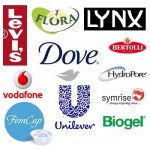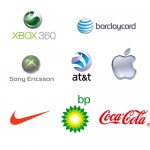Marketing

As globalisation of world rapidly changes, today’s global managers, whose company operates in many parts of world, face many challenges in securing their business interests in other countries. When a business decides to enter the foreign market there are a several factors that a company should take into consideration before deciding to expand their product or service into foreign market. Among these factors are the cultural differences the company faces. Cultural differences exist between different countries and these differences must be known and evaluated by the marketing firm. According to Lancaster et al (2002) a number of factors contribute a country’s overall culture including religion, education and aesthetic appreciation. In last twenty years, learning cultural differences among nations and need for greater cross cultural awareness have been seen to be a very important factor in improving and facilitating marketing activities of a company outside their country of origin as different cultures has different ways of doing business, different cultural assumptions, values and attitudes. Therefore, culture is important and has to be appreciated by the managers running the company. It simply can make or break relationship and even may cost the business millions of dollars. Moreover, adaptation to the environmental differences from one market to another is seen as the key to successful international marketing. It is vital for international marketer being able to anticipate the uncontrollable factors of both the foreign and domestic market that have great influence on a marketing mix, so he or she can adjust the marketing mix to minimize the effects. After all, due to globalisation of markets and products, today increasing numbers of international marketing staff have to deal with ethical issues in cross cultural global economy. As a result, it is claimed by many international marketing researchers that the concept of “self reference criteria”…

Initially it had been presumed that consumers simply wanted their products and services with no questions asked but as the case may be people began to peer behind the brand facades and discovered all sorts of things they didn’t like from environmental irresponsibility to exploitation of child labour consequently social and moral concerns began to firmly exist in traditional marketing terms (Mitchell 2007). As a result of this progression major developments in the form of corporate social responsibility (CSR) began to occur. CSR is defined as ‘recognising that companies have a responsibility to a range of stakeholder groups such customers, employees and suppliers (Adkins 2005). Consumer reactions to CSR are not as straightforward as preferred with numerous factors affecting whether a firm’s activities translate into consumer purchases. Although people say that CSR matters in their purchase decisions, the reality is that customer responses to initiatives are not always consistent (Sen and Bhattacharya 2001). However over the past decade, CSR has gradually been integrated into the business activities of companies all over the world where businesses integrate social and environmental concerns into their corporate operations (Demetriou et al 2010). CSR allows businesses the opportunity to strengthen their corporate reputation and profitability by signalling to the various stakeholders with whom the organization interacts that it is committed to meeting its moral obligations. As a result, ‘many businesses have become more closely interrelated with society by focusing on charitable donations, corporate philanthropy, community participation, and Cause-related marketing’ (CAUSE-RELATED MARKETING ) (Demetriou et al 2010). CAUSE-RELATED MARKETING as it is purposefully referred to involves partnering charitable causes with products for marketing programs (Chang 2009) and applying strategies to support these causes whilst building the business (Adkins 2005). Cause related marketing recognises the importance of an alliance between businesses and charitable organisations for the same…

Kotler and Keller (2006) state that people usually buy familiar brand because they are comfortable with products or services with which they are familiar. Moreover, there is also an assumption that a familiar brand is probably reliable and also of better quality as it has been previously consumed by the consumers. Therefore, a familiar brand is preferred over an unknown branded product as customers tend to give preference over the brand they hardly heard of or used. Moreover, this is also supported by Hall et al (2007) who state that unknown brands have little chance, if any, in today’s competitive marketplace. Therefore, creating awareness of the brand in the marketplace is one of the challenges for many businesses due to the fact that this process is very costly and requires well-tailored strategy to accomplish. As the table above illustrates, the more brand awareness is achieved, the higher the sales to be achieved by the company. The table shows an example to Prada, a luxury fashion brand product which it has been achieving higher sales as it has been improving its brand awareness in the marketplace. This is to say that Prada brand image is already well-established; however, it still keeps updating to promote its brand image in order to increase the awareness of its brand in the minds of its consumers. The table above also illustrates the stages of achieving the brand awareness in the marketplace. This is to say that the brand starts with “Brand foundation” stage where the company puts its efforts to make its brand’s identity and relevant to its core business purposes. This is followed by above the crowd stage, as the company achieves to differentiate its brand image from other competitors in the market. The next stage of the brand building or improving the brand…

The ultimate level is brand name dominance where, in a recall task, most customers can only provide the name of a single brand such as Coca-Cola, Steak Sauce, Kleenex, Xerox and many more. This shows that dominance of the brands on the peoples’ mind. This is usually referred as a successful brand positioning and promotion as the value of the company also increases together with the value of the brand name. However, ironically this ultimate success may be tragic if the brand name becomes such a common label for the product that is not legally protectable and is lost. This happened in the cases of Aspirin, Cellophane, Escalator and Windsurfer. In order to avoid losing the trademark, a firm should begin protecting it early in its life by starting with the selection of the name itself and beware of the descriptive names such as Windows as it becomes harder to distinguish from the generic product and hence harder to protect. In the case of luxury brand fashion products, it does not seem to be a reason for concern as majority luxury brand fashion products already have their unique and patent protected names which are not also generic names which are hard to protect. However, they still have to be careful about making their products or brand names to be used to describe other similar products in the market as it creates confusion and damages the brand name and image.

Baker (2007) states that as markets have become more competitive and products have only marginal differences in their physical formulation, it becomes critical and very important for the companies to add psychological values through their advertisement and packaging and other aspects of the marketing mix. This indicates that the companies, in order to differentiate their brands and products in the competitive market are spending more than before in order to attract and retain more customers. Burrow (2008) further supports Baker (2007) in regards to the ever increasing budgets for the advertisement and promotional strategies employed by the companies in order to promote their brand images to differentiate their products and services in the competitive market. He states that one of the top spenders in the industry are Jewellery sector, Chemists, Sport Shops and Luxury Brand fashion products as they consider their success through advertisement and promoting their brand images. Gilbert (2003) defines the brand personality as being a unique mix of functional attributes and symbolic values. The functional values of the brand are extrinsic tangible product properties such as hardwearing or easy to use function of the product, whereas the symbolic values of the product describe intangible properties such as friendliness or fun sides of the products which are usually achieved through promotion and advertisements in order to make these features popular to the segment market consumers. Burrow (2008) states when a brand is created and promoted which is strong both in functional attributes and symbolic values, if promoted successful, then these brands become part of the peoples’ life styles. This is to say that the consumers start talking about the brand personality, its image and try to link it to their own personal needs and wants as it integrates into their personal life standards. Therefore, it can be said…

The positioning of the products, namely the luxury brand fashion products which are designed and aimed at upmarket customers in the form of differentiated products may have several forms and varieties. This is to say that the luxury brand fashion products can be positioned in the market based on the usage or function of the product, price of the product, being a substitute product and many more. According to Callen (2009) luxury brand fashion products may be positioned in the market as a substitute product to products. This is to say that even if there is already a product which is targeting the same upmarket segment, the new substitute product may be offered that adds some twists and changes to the product that may also create another niche market within the concentrated and niche market. Even though this marjet segment tends to smaller than the original market segment, it still can be profitable and worth positioning by luxury brand fashion products as the prices for the products will be too high compared to other market segments. Alternatively, Hackley (2009) states that the price may be another focus when positioning the luxury brand fashion products. In the high street clothing industry, the top designer brands usually create their designs first, which is usually copied and launched to the market market by other mid-to-low market focusing companies. However, in some cases, a company in the mid-to-low market may launch a product that may trigger the luxury brand fashion company to launch the similar product to the upmarket as exclusive and unique product as some customers are willing to pay extra for the extra add-ons on the products. The author calls this as copying from midmarket and introducing it to the upmarket which usually have been successful in the high street fashion sector…

Kitchen (2010) states that retailers should focus on building a customer relationship marketing in order to build a brand loyalty of their customers in order to promote their repetitive purchasing behaviour. He further mentions that some consumers use the same retail outlet or purchase the same brand of product in most occasions. This leads to a loyalty either to a particular store or brand thus store or brand loyalty. There are several reasons for basing customer loyalty either on brand or the store which are as follows: Kotler (2003) states that some customers are loyal to stores due to the monopoly position of the stores as they have no other alternatives for their shopping decisions. This leads to a compulsory brand loyalty where the retailers enjoy loyalty to their stores, but not often to their brand names which is not usually assumed to be a long-term loyalty by their customers. Inertia loyalty is another example of loyalty to specific brand names where customers remain loyal to certain brand names due to the level of satisfaction they get from it, therefore, do not seek other alternatives as they do not wish to try something new. This type of loyalty is a loyalty to brand names rather than the stores which usually leads to relatively longer term loyalty by customers. In this type of loyalty, customers usually follow the same type of brand names wherever they go. Lancaster et al (2002) mention about convenience loyalty where customers tend to stick to their local retailers due to convenience and comfort. This is usually referred as casual loyalty, but does not tend to be a long-term loyalty by customers. However, in the case of this dissertation, this type of brand loyalty does not apply or suit the branding strategies of the high street luxury…

Kotler (1997) defines a brand as a name, sign, symbol or design or a combination of them, intended to identify the goods or services of one seller or group of sellers and to differentiate them from those of competitors. By creating brand image and name, retailers, especially luxury brand companies which target upmarket customers usually differentiate their products, hence charge higher prices. Hall et al (2007) also supports Kotler (2007) and states that when promoting the brand image and name, retailers should be aware of the specific market segment they are targeting as luxury brands usually tend to focus on niche market. Lancaster et al (2002) also mentions about the importance of strong and popular brands as a key to a long term and consistent success in the future. They state that successful branding is derived when the company can associate or create a personality of the brand and when customers can not imagine their lives without those brands or these brands become an active part of their lifestyle. Gilbert (2003) further illustrates the importance of the brand as by associating it to emotions and experiences. He states that an individual’s awareness of the world is made up of experiences, learning, emotions and perceptions or in other words cognitive evaluations of such experiences. This image obviously creates an individual’s preference and motivation towards products as it will provide a pull effect resulting in different demand schedules. Therefore, he defines a success of brand as not what thet company outs in it, but how the customers perceive it and associate it to some of their emotional and cognitive evaluations. The strong positive brand is very important in the developed and highly competitive markets. Therefore, the UK is an example for a marketplace where the existence of a strong positive brand image…

The paradigm of marketing mix can be defined as “a unique blend of product, place, promotion, and pricing strategies designed to produce mutually satisfying exchanges with a target market” (Lamb et al, 2011, p.47). The product element of the marketing mix relates to decisions about product design, name of the brand, packaging, warranties etc. The pricing element, on the other hand, relates to decision-making about the pricing strategy and the calculation of total costs of products and services to customers. Promotion includes, advertising, personal selling, sales promotion, public relations, and any other activities that are aimed to advertise brand and its products and services. Place element of the marketing mix mainly involves the location where products and services are sold. Nargundkar (2008) convincingly argues that the main benefit of marketing mix paradigm relates to its assistance in selecting competitive edge for the business. In other words, marketing mix paradigm communicates the idea that it is not possible for businesses to have competitive edge for all four aspects of the business – product, place, promotion, and price, and adopting one element of marketing mix as a source of competitive edge would mean compromising other elements. For instance, UK clothing retailer Primark has adopted price element as the source of competitive edge for the business, and thus the brand has to compromise on some of the other elements of the marketing mix. Specifically, if Primark management decide to increase the quality of products and promotion this would result in the prices of its products to be increased, thus its current competitive advantage of low prices would be compromised. There have been many additional Ps added by business researchers over the course of the last several decades, however as Baker and Hart (2007) inform, the most acknowledged additional Ps apart from the original…

Among innovative forms of marketing viral marketing is attracting increased level of attention from both, business researchers and practitioners. The definition of viral marketing can be worded as “the use of marketing strategies to propagate a product or service awareness through the use of existing social networks” (Allen, 2008, p.61). Alternatively, viral marketing or viral advertising is defined as “a strategy that encourages individuals to pass on a marketing message to others, creating the potential for exposure and influence” (Wilson, 2005). First of all the term marketing is defined as “the management process responsible for identifying, anticipating and satisfying customer requirements responsibly” (Shaw, 2007, p.1). Marketing strategy, as Baker and Hart (2007) inform, is the selection of overall strategy and tools and methods businesses choose to employ in order to deal with the marketing aspect of the business in a highly successful manner. Viral marketing, on the other hand, is defined by Allen (2008) as the principle according to which members of a social network influence on the purchasing decisions of each-other. The Role and Importance of Marketing Strategy A range of viewpoints have been formulated by secondary data authors about the role and purposes of marketing strategy for a business entity. A widely accepted purpose of marketing strategy by secondary data authors is that “marketing strategy integrates the activities involved in marketing, sales, advertising, public relations, and networking” (Pinson, L, 2008, p.44). Similar ideas have been offered by Avasarikar and Chordiya (2007), Baker and Hart (2007), and Kitchen (2010). The changing role of marketing due to the influence of increasing forces of globalisation, technological advancements and a set of related reasons are summarised by Doyle (2008) into the following table: Past Today Objective of marketing Create customer value Create shareholder value Marketing strategy Increase market share Develop and…
